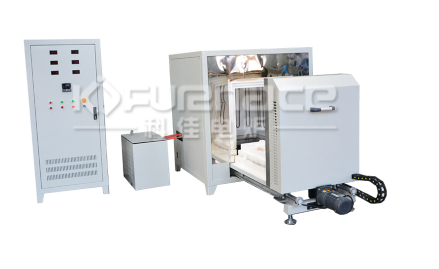As a commonly used heat treatment electric furnace, the annealing muffle furnace is widely used for annealing after heat treatment in the fields of gears, metal workpieces, powder metallurgy, ceramic sintering, etc. So, what aspects should be paid attention to when choosing an annealing muffle furnace? Let’s take a detailed look below!

A commonly used experimental mini box furnace (click on the image to view product details)
1. Temperature range: Clearly define the maximum and minimum operating temperatures required for experiments or production. For example, annealing of metal materials may only require a muffle furnace at around 1000 ℃, while firing ceramics may require a high-temperature muffle furnace above 1400 ℃. Generally speaking, the limiting temperature of the muffle furnace should be 100-200 ℃ higher than the actual operating temperature to ensure the stability and safety of the equipment during long-term operation.
2. Furnace material: Common furnace materials include ceramic fibers and refractory bricks. Ceramic fiber furnaces have the advantages of light weight, fast heating, and energy saving, but their stability at high temperatures is slightly weaker; The refractory brick furnace has strong durability, but the heating rate is slower. If experiments or production require high temperature uniformity and frequent use, ceramic fiber furnaces may be more suitable; If working at high temperatures for a long time and requiring high stability, a refractory brick furnace is a better choice.
3. Temperature control accuracy: High precision temperature control is crucial for the accuracy of experimental results. Generally speaking, muffle furnaces with temperature control accuracy of ± 1 ℃ or higher are more capable of meeting strict experimental requirements. For example, when conducting chemical analysis experiments, precise temperature control is necessary to ensure the accuracy and reproducibility of the reaction.
4. Heating elements: Common heating elements include resistance wires, silicon carbide rods, and silicon molybdenum rods. Resistance wire has a low price but a narrow temperature range, generally suitable for heating needs below 1000 ℃; Silicon carbon rods and silicon molybdenum rods are suitable for higher temperatures, but the cost also increases accordingly. Heating requirements exceeding 1200 ℃ should consider muffle furnaces heated with silicon carbon rods or silicon molybdenum rods.
5. Furnace size: Choose the appropriate furnace size based on the number and size of samples processed. The furnace volume should generally be selected to be more than three times the total volume of the sample to ensure sufficient space for heat treatment and improve space utilization efficiency. If dealing with large samples frequently or multiple samples simultaneously, it is necessary to choose a large-sized furnace.
6. Control method: Modern muffle furnaces are usually digitally controlled, which is easy to operate and precise. Some also have programmable control functions, which can set multiple temperature ranges and times to achieve complex heat treatment processes. For experiments or production that require complex temperature curve control, programmable controlled muffle furnaces are more suitable.

Customized industrial high-temperature box type electric furnace (click on the picture to view product details)
7. Safety: Choosing a muffle furnace with safety functions such as overheating protection and break protection can effectively prevent accidents from occurring. Good insulation design can reduce shell temperature and lower the risk of burns. In densely populated places such as laboratories, high safety muffle furnaces can ensure the safety of personnel.
8. Brand and after-sales service: There are numerous muffle furnace brands in the market, but the product quality varies greatly. To ensure the purchase of reliable quality products, it is recommended to choose a brand with a better reputation, MaFu Furnace. Good brands have good guarantees in terms of performance, safety, and after-sales service. At the same time, understand the manufacturer’s after-sales service policies, such as warranty period, maintenance services, etc., to ensure that any problems encountered during use can be resolved in a timely manner.Click to learn more muffle furnaces! Or click on online customer service to learn more about product information!